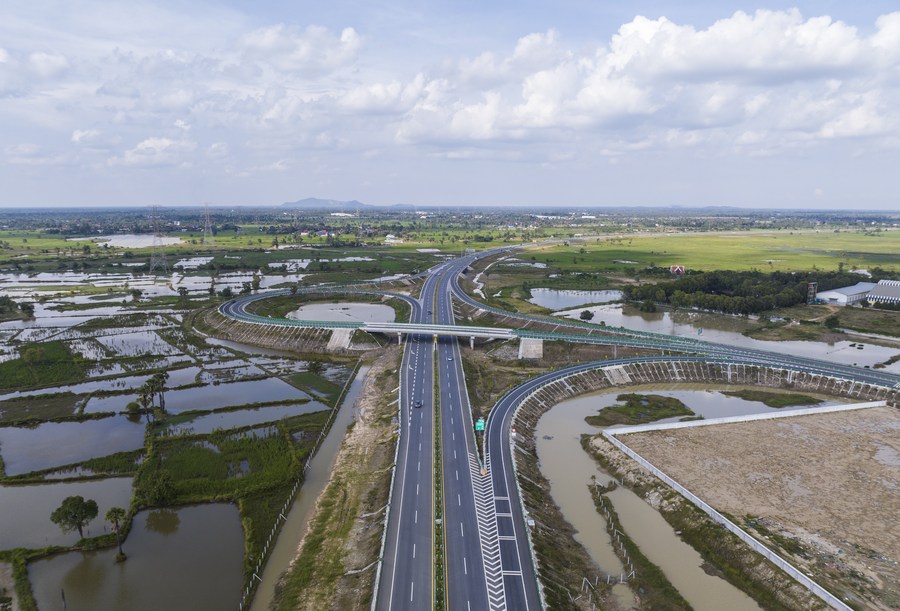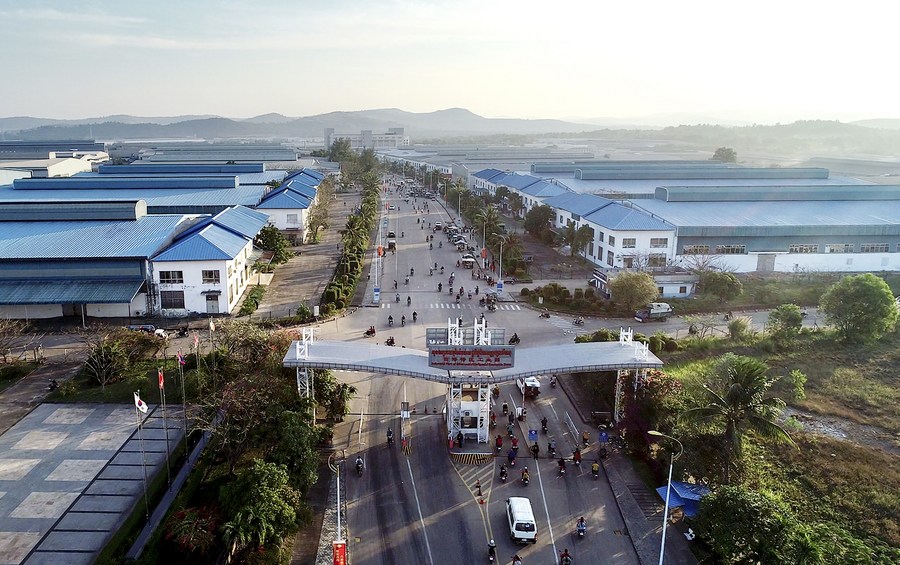China's BRI boosts infrastructure connectivity, green development: Cambodian scholar

This photo taken on Oct. 28, 2022 shows Cambodia's Golden Port Expressway in Kampong Speu province. (Xinhua)
The BRI has greatly changed infrastructure conditions and supported green development in more than 100 countries since its inception in 2013, Joseph Matthews, a senior professor at the BELTEI International University in Phnom Penh.
PHNOM PENH, Oct. 14 (Xinhua) -- China's Belt and Road Initiative (BRI) has given a big boost to the development of infrastructure connectivity and green growth in all participating countries, a Cambodian scholar said on Friday.
Joseph Matthews, a senior professor at the BELTEI International University in Phnom Penh, said the BRI has drastically and dramatically changed infrastructure conditions and supported green development in more than 100 countries since its inception in 2013.
Matthews said the BRI has offered tremendous opportunities for international cooperation, contributing to sustainable and high-quality development in participating countries in the areas of transport infrastructure, renewable energy, green finance, digital connectivity, and health, among others.
For Cambodia, the professor said the Southeast Asian country has tremendously benefited from Chinese-invested and -aided BRI projects, adding that those key projects included the Phnom Penh-Sihanoukville expressway, roads, bridges, hydropower plants, Sihanoukville Special Economic Zone, seaports, airports and Morodok Techo National Stadium.
"These high-quality BRI projects are empirical evidence that shows how much Cambodia has been transformed from outdated and depleted infrastructure to the modern way of communication and transportation," he said.

This photo taken on Feb. 26, 2023 shows the Sihanoukville Special Economic Zone (SSEZ) in Sihanoukville, Cambodia. (Xinhua)
"These projects have greatly contributed to Cambodia's socioeconomic development and poverty reduction, injecting strong momentum into building a high-quality, high-level and high-standard Cambodia-China community with a shared future in the new era," Matthews said.
He said the development of the 400-megawatt Lower Sesan II Hydropower Station in northeast Cambodia's Stung Treng province was a good example of BRI projects, which laid a focus on clean and green development, with environmental protection.
He noticed that the project has built a 2,900-meter-long fishway, saying this nature-like fishway is essential to better facilitate fish migration and to maintain the diversity of fish in the area.
Matthews said that despite all the positive impacts on the least and underdeveloped countries' infrastructure and green development globally, certain Western countries unscrupulously disseminated negative and unfounded fictional stories about BRI projects around the globe.
"It looks like that their opposition to BRI projects is politically motivated," he said. "The BRI does not form any cliques based on specific ideological standards."
"The BRI has developed a new model of international cooperation based on mutually beneficial and win-win outcomes towards building a global community with a shared future for mankind," he added.
The BRI, which consists of the Silk Road Economic Belt and the 21st Century Maritime Silk Road, was initiated by China in 2013 with the aim of enhancing all-around connectivity through infrastructure construction, exploring new driving forces for world economic growth, and building a new platform for world economic cooperation.


